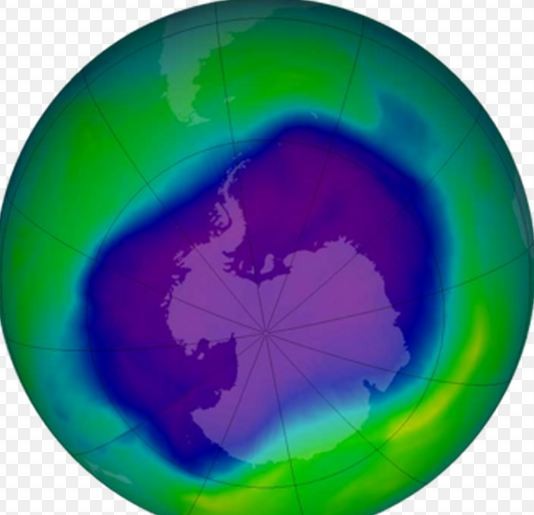The ozone layer shows signs of healing--slowly
| Arthur Dominic Villasanta | | Sep 11, 2014 03:06 AM EDT |
(Photo : NOAA, NASA) Image of the largest ozone hole over the Antarctic, 2006
The ozone layer that protects the Earth from deadly ultraviolet radiation is no longer thinning and is instead showing welcome signs of thickening.
The World Meteorological Organization and the UN Environment Program, both agencies of the United Nations, also reported the ozone hole that appears annually over the South Pole has stopped growing larger every year.
Like Us on Facebook
The largest ozone hole on record, which was seen in 2006, was some 30 million square kilometers in size. The ozone hole is now 20 million square kilometers in size.
The "re-growth" of the ozone layer will help prevent millions of cases of skin cancer and other conditions, especially among inhabitants in the southern hemisphere such as Australia. The UN report supports previous studies that show the ozone layer has stopped shrinking.
"International action on the ozone layer is a major environmental success story ... This should encourage us to display the same level of urgency and unity to tackle the even greater challenge of tackling climate change," said WMO Secretary-General Michel Jarraud.
Discovered in 1913, the ozone layer or ozone shield is that region of Earth's stratosphere that absorbs most of the Sun's UV radiation. It's mainly found in the lower portion of the stratosphere, some 20 to 30 kilometers above the Earth.
UN experts said the thickening of the ozone layer confirms the success of a 1987 ban on man-made gases like freon that damage the shield. Chlorofluorocarbons (CFCs) such as freon have been blamed for ozone depletion.
"Now for the first time in this report we say that we see indications of a small increase in total ozone. That means recovery of the ozone layer in terms of total ozone has just started," said Geir Braathen, WMO senior scientific officer.
Braathen said the annual enlargement of the ozone layer during the 1990s "has stopped, so it has leveled off."
"We think in about 2025 or thereabouts we'll be able to say with certainty that the ozone hole is getting smaller," he added.
The 1987 Montreal Protocol banned or phased out ozone depleting chemicals, including CFCs that were once commonly used in refrigerators and spray cans. The UN estimated the ban would prevent two million cases of skin cancer every year by 2030.
The UN initially estimated the ozone layer will recover towards its 1980 level by the middle of this century.
This recovery is expected to take longer in Antarctica, however. The ozone layer becomes dangerously thin every year in Antarctica between mid-August and November or December.
But a new threat to the ozone layer from rising levels of other greenhouses gases in the atmosphere has "the potential to undermine these gains," said the UN.
©2015 Chinatopix All rights reserved. Do not reproduce without permission
EDITOR'S PICKS
-

Did the Trump administration just announce plans for a trade war with ‘hostile’ China and Russia?
-

US Senate passes Taiwan travel bill slammed by China
-

As Yan Sihong’s family grieves, here are other Chinese students who went missing abroad. Some have never been found
-

Beijing blasts Western critics who ‘smear China’ with the term sharp power
-

China Envoy Seeks to Defuse Tensions With U.S. as a Trade War Brews
-

Singapore's Deputy PM Provides Bitcoin Vote of Confidence Amid China's Blanket Bans
-

China warns investors over risks in overseas virtual currency trading
-

Chinese government most trustworthy: survey
-

Kashima Antlers On Course For Back-To-Back Titles
MOST POPULAR
LATEST NEWS
Zhou Yongkang: China's Former Security Chief Sentenced to Life in Prison

China's former Chief of the Ministry of Public Security, Zhou Yongkang, has been given a life sentence after he was found guilty of abusing his office, bribery and deliberately ... Full Article
TRENDING STORY

China Pork Prices Expected to Stabilize As The Supplies Recover

Elephone P9000 Smartphone is now on Sale on Amazon India

There's a Big Chance Cliffhangers Won't Still Be Resolved When Grey's Anatomy Season 13 Returns

Supreme Court Ruled on Samsung vs Apple Dispute for Patent Infringement

Microsoft Surface Pro 5 Rumors and Release Date: What is the Latest?










